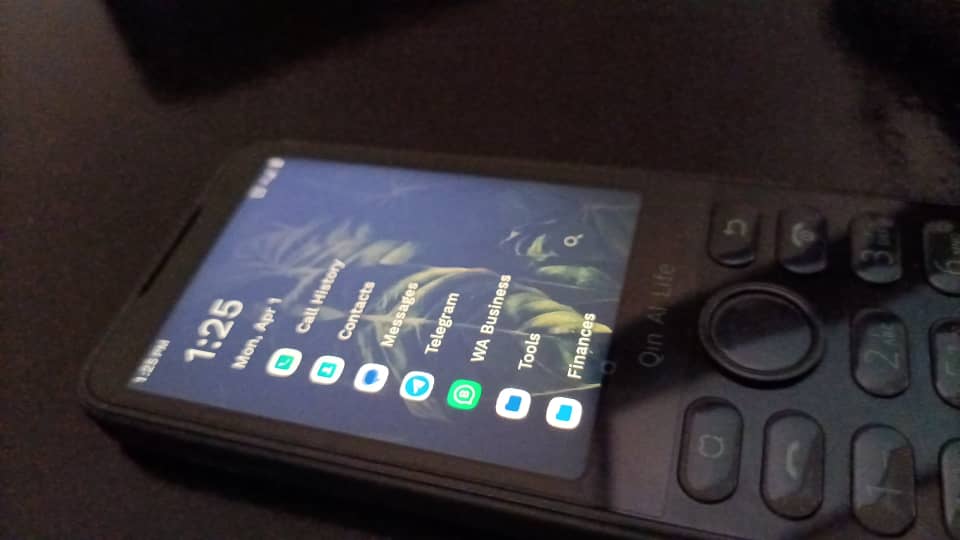I spoke deeply about the topic of Social Media and Phone Addiction impacts on the Brain and Attention Span. We discussed the potential correlation between ADHD and Phone Addiction. And I also shared Benefits of Breaking Phone Addiction.
This article acts as an extensive guide on how to break phone addiction. We will delve into scientifically proven techniques, unique methods, and strategies to limit screen time. And ultimately, breaking social media addiction.
How to Break Phone Addiction?
Know the Benefits You Will Get Eventually
Just like the health benefits a smoker enjoys after quitting cigarettes motivate them to stay smoke-free, quitting phone addiction offers a range of advantages we explored in a previous article: Breaking Phone Addiction: What Are the Benefits?
Here’s a quick taste: no more lack of focus, enhanced attention span and cognitive abilities, reduced stress, improved sleep, and deeper connections with others.
Setting Time Limits and Boundaries
The first step to breaking phone addiction is setting boundaries. Imagine carving out specific times throughout the day to check your phone, like mini phone breaks, instead of the constant, open-door policy it currently has. Set a screentime widget on your home-screen. And a goal of no more than 1 hour per day, it’s a challenging but achievable target.


Think of it like quitting smoking. Going cold turkey can be brutal. Here, the screen time widget on your home screen acts as your nicotine patch – a mindful reminder to stay within your limit. This initial restriction serves a dual purpose: it curbs your phone use and provides a baseline for understanding your current addiction level.
Just like monitoring your withdrawal symptoms when quitting smoking, consistently checking your screen time keeps you accountable. Even if you exceed the limit sometimes, acknowledging those moments fosters mindfulness. This newfound awareness will help you stay on track with the essential tasks like texting friends (and Booking, Uber, Maps…), all while avoiding the rabbit hole of compulsive phone use.

Creating Barriers Between You and the Phone
Remember the Stanford Marshmallow Experiment? The most successful kids, those who waited patiently for the second treat, weren’t necessarily the most disciplined. Interestingly, it was the children who employed a clever tactic: they actively distracted themselves by singing or playing a game.
This translates beautifully to phone addiction. Just like removing the marshmallow from sight helped those kids resist temptation, creating physical or mental barriers can significantly boost your success in breaking phone addiction.

Mental Speedbumps: Disrupting the Autopilot
The key to overcoming compulsive phone use often lies in our minds. We can create mental speed bumps that disrupt the autopilot mode and make us more conscious of our actions. These are the first baby steps towards breaking phone addiction.
• Use Complex Passwords
Swap those easily-guessed PINs and patterns for long, complex passwords. This extra step forces you to pause and consider your actions, interrupting the mindless reach for your phone.
• Make Social Media Access Harder
Consider updating your passwords and either logging out or removing social media apps entirely. Opt for logging out each time you engage with social media, ensuring to change to a more complex password beforehand. Alternatively, take a daring move by uninstalling social media apps, utilizing them only sparingly on the computer when required. Their absence removes the constant temptation and frees up valuable mental space.

• Disable fingerprint or Face ID unlock
Reaching for your phone and needing a password creates a moment of reflection, allowing you to consciously choose if phone use aligns with your goals.

These mental roadblocks serve a dual purpose. First, they act as a gentle reminder of your commitment to breaking phone addiction. Second, they expose the automatic, often intrusive, thoughts that lead you to grab your phone. By becoming aware of these triggers, you can begin to actively break phone addiction.
Ultimately if you decide start using your phone following a detox period, keeping these mental “speedbumps” can greatly help in decreasing your screen time.

Physical Barriers: Hard But Effective
While mental roadblocks are a great starting point, physical barriers add another layer of defense in your fight against phone addiction. These tangible steps showcase your commitment by making phone use more inconvenient:
• Out of Sight, Out of Mind

Believe it or not, some people use a timed lock box for their phones. Some parents use this method to control their children’s screen time. While it may be effective for some, it’s not the approach I would take.

You can simply put your phone away in a drawer, or even another room. The physical distance reduces the constant temptation and frees up valuable mental space you previously used for resisting urges. It won’t be the end of the world if the phone is not on your table.
Putting physical distance between you and your phone can be a harsh yet honest reality check. You might even experience “nomophobia,” the fear of being without your phone – a concept we explored in a previous article. It’s a normal reaction, but facing this anxiety head-on is a sign of progress in breaking phone addiction.
• Phone-Free Zones
This is complementary with the previous item. Choose specific areas in your home or workplace as phone-free zones. This creates a physical boundary that promotes focus on the task at hand.

Consider starting the practice of a “phone-free bedroom,” even if you’re not addicted to your phone. Blue light disrupts sleep, and the constant stimulation delays your brain’s wind-down. Waking up phone-free allows you to start your day focused on what matters, boosting productivity and well-being. Many find this routine fosters a more mindful approach throughout the day.
• Use a “Dumbphone” for Detox (with nuance)

For a more radical approach, consider using a “dumbphone” during detox periods for calls and texts only. While this eliminates the internet access that fuels social media addiction, it might not be a sustainable solution for everyone in the long run.
Frustration could outweigh the benefits, especially for those who rely heavily on internet-based tools for work or personal connections. However, this option can be ideal for a set period to break the social media cycle. Better alternatives are discussed in the next part.
Also: In a future article, I’ll share a creative solution I found – a smart “dumbphone” (touchscreen included!) that might offer a more practical alternative.
Treat Your Phone as a Tool, Nothing More
The third pillar of our approach focuses on stripping your phone of its addictive qualities and transforming it into a productivity powerhouse. Here’s how:

Grayscale Mode
Get rid of the bright colors that attract you. When you put your phone in grayscale mode, it becomes less visually appealing, so you’re less likely to want to look at it. Using the phone will feel a bit off, it won’t feel quite “right”. Try grayscale for a day or two, you’ll see what I mean.
Taming the Notifications

Ditch notification sounds and vibrations altogether, leaving only phone calls to get through. This ensures you stay reachable for truly important matters while eliminating distractions from texts.
Don’t worry about missing urgent messages – if it’s critical, they’ll likely call. This approach lets you check messages on your own terms, which is a necessary part of breaking phone addiction.
Essential Apps Only
Ruthlessly uninstall anything non-essential, and counterproductive (social media first!). Keep just the basics: banking, navigation, music, maybe one or two messaging apps just for close family members and friends.
Focus On Function


Your phone is not a playground, don’t use it for entertainment. Choose apps that actually help you be productive. Make the phone a toolbox, nothing more! You can tailor it to your needs. But the goal is to minimize distractions and maximize a mindful digital life.
Replacing Social Media/Phone Use by Building New Routines
Limited social interaction and a routine heavy on work or studies can make breaking phone dependence harder. Spice up your life! Try new restaurants, challenge yourself with a sport, or explore new places – anything to add some excitement.
Breaking free eventually involves replacing old routines with new ones that are engaging and rewarding. Consider picking up an affordable hobby like reading (personal favorite), gardening, gym, hiking, yoga, writing, painting… Remember, you don’t need to be a master – the key is to find something enjoyable that builds resilience and replaces the phone habit.

For me, Kindle is a fantastic swap for mindless phone scrolling! It lets me delve into captivating books, offering a much healthier and more engaging screen experience. It’s still a screen after all, but the focus shifts entirely to reading, promoting relaxation and knowledge absorption.
Our brains crave dopamine, so replacing mindless phone use with a fulfilling activity helps redirect that desire towards healthier pursuits. Choose wisely! This new hobby should be something you genuinely enjoy, not something harmful or overly stimulating.
Final Thoughts
Remember, conquering phone addiction is a journey, not a sprint. Embrace patience and consistent effort. Just like an ex-smoker, a relapse doesn’t signal failure – it’s a chance to learn and recommit. Be kind to yourself! Phone addiction is a complex issue and is not a public discussion, YET.
Self-compassion is key, set achievable milestones and reward yourself for the progress you made. This isn’t about brute force, but cultivating mindfulness and self-empathy.

Leave a Reply